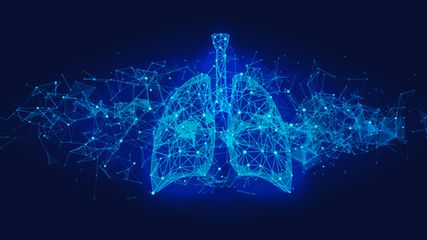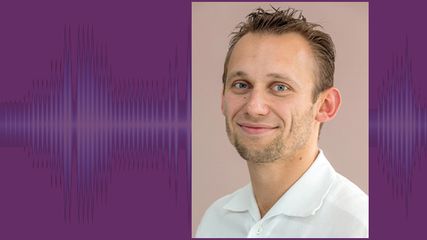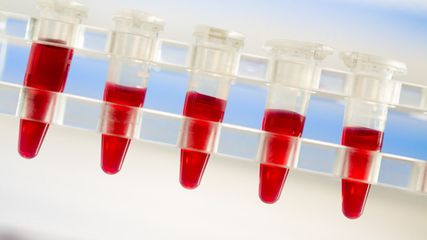
Welche Daten Jung-Onkolog*innen erwähnenswert finden
Das Kernstück in der Nachwuchsförderung der Schweizerischen Arbeitsgemeinschaft für Klinische Krebsforschung (SAKK) ist die Young Oncology Academy (YOA), ein Förderungs- und Mentor*innenprogramm für junge Onkolog*innen. Als Teil der Academy besuchen die teilnehmenden Assistenzärzt*innen einen grossen Kongress. Im dritten Teil unserer Serie nun die letzten drei dieser dabei entstandenen Berichte.
Highlights of ESMO Congress 2022 in Paris – Upper Gastrointestinal Cancer
HER2 (human epidermal growth factor receptor 2) represents one of the clinically most relevant biomarkers for patients with stage IV gastric or gastroesophageal junction (GEJ) cancer. The expression of HER2 plays a crucial role in the treatment protocol to be followed.
HER2-positive disease: DESTINY-Gastric02
G. Y. Ku presented the updated results of this nonrandomized phase II single-arm trial. Trastuzumab1 is a monoclonal antibody against HER2 and represents the standard of care for patients with HER2-positive advanced gastric or GEJ cancer when combined with chemotherapy.2 However, in the case of progression under this therapy, the available treatment options are limited.
After the promising results of the randomized phase 2 trial DESTINY-Gastric013, which demonstrated that the antibody-drug conjugate trastuzumab-deruxtecan (T-DXd) led to significant improvements in response and overall survival (OS) when compared to chemotherapy alone in patients from Asia (median OS, 12.5 vs. 8.4 months; p=0.01), the DESTINY-Gastric02 trial investigated the role of T-DXd in a western population. 79 patients from the United States and Europe with pathologically confirmed HER2-positive (IHC3+ or IHC2+/ISH+) unresectable or metastatic disease after progression on a first-line Trastuzumab-containing regimen were enrolled in this study.
After a median follow-up of 10.2 months, the confirmed objective response rate (ORR) was 41.8% (95% CI: 30.8–53.4). The median OS was 12.1 months (95% CI: 9.4–15.4), in line with the results of the DESTINY-Gastric01 trial, and a median progression-free survival (PFS) of 5.6 months (95% CI: 4.2–8.3) was reported. Treatment-emergent adverse events (TEAEs) grade ≥1 were reported for all patients, and 55.7% reported grade ≥3. The most common TEAEs being nausea (67.1%), vomiting (44.3%) and fatigue (57.0%), which was consistent with the established safety profile of T-DXd. Patient-reported outcomes were assessed utilizing general (EQ-5D) and gastric cancer-specific (FACT-Ga) scores, suggesting that quality of life did not worsen during the treatment.
Limitations of DESTINY-Gastric02 include the relatively small sample size and the single-group design. To overcome these limitations, DESTINY-Gastric04,4 a global, multicenter, open-label, 2-arm, randomized phase III trial is actively enrolling patients from 24 different countries.
HER2-negative disease: Moonlight trial
S. Lorenzen presented the results of two arms (A1/A2) of this four-arm investigator-initiated phase II trial that enrolled 90 treatment-naïve patients with HER2-negative advanced or metastatic adenocarcinoma of the stomach or GEJ. The aim of this trial was to evaluate whether the administration of FOLFOX chemotherapy plus nivolumab (nivo)5 and ipilimumab (ipi) in parallel (arm A1) is more effective than FOLFOX induction followed by nivo and ipi (arm A2) with the primary endpoint progression-free survival (PFS) at 6 months. 90 patients were randomized 1:2 to arm A1 (60 patients; FOLFOX plus nivo 240mg; q2w and ipi 1mg/kg; q6w administered in parallel) or arm A2 (30 patients; three cycles of mFOLFOX induction treatment followed by nivo and ipi). With a median follow-up of 7.3 months PFS at 6 months was significantly higher (57%) in arm A1 than in A2 (28%; p=0.012) with a median PFS of 8.4 vs 4.0 months, respectively (p=0.006). Median overall survival was not reached in A1 and was reported at 9.1 months in A2. The objective response rate was 47% vs 30%, respectively. Treatment-related adverse events (AE) were less common in the sequential arm. Specifically, grade ≥3 AE were observed in 93% of the patients enrolled in arm A1 and 73% in arm A2, serious AE were 70% in arm A1 and 62% in A2.
In conclusion, the study suggests that the parallel administration of FOLFOX chemotherapy plus nivolumab and ipilimumab is more effective than the sequential administration of the treatment and should be considered the first-line approach for patients with HER2-negative disease despite the association with higher toxicity.
Alexandros Lalos (35) ist Assistenzarzt für Viszeralchirurgie am Universitätsspital Basel. Die YOA war für ihn die Gelegenheit, eine solide Grundlage für seine Zukunft in der Medizinwissenschaft zu erarbeiten. Denn wie Nietzsche sagte: «Wer einst fliegen lernen will, der muss erst stehen und gehen und laufen und klettern und tanzen lernen – man erfliegt das Fliegen nicht.»
Authors:
Dr. med. Alexandros Lalos1
PD Dr. med. Lukasz Filip Grochola2
1 Clarunis Visceral Surgery
University Hospital of Basel
2 Department of Visceral & Thoracic Surgery,Cantonal Hospital Winterthur
Literature:
1 Hudis CA et al.: Trastuzumab - mechanism of action and use in clinical practice. N Engl J Med 2007; 357: 39-51 2Bang YJ et al.: Trastuzumab in combination with chemotherapy versus chemotherapy alone for treatment of HER2-positive advanced gastric or gastro-oesophageal junction cancer (ToGA): a phase 3, open-label, randomised controlled trial. Lancet 2010; 376: 687-97 3 Shitara K et al.: Trastuzumab deruxtecan in previously treated HER2-positive gastric cancer. N Engl J Med 2020; 382: 2419-30 4 Shitara K et al.: Trastuzumab deruxtecan (T-DXd) in patients (Pts) with HER2-positive gastric cancer (GC) or gastroesophageal junction (GEJ) adenocarcinoma who have progressed on or after a trastuzumab-containing regimen (DESTINY-gastric04, DG-04): A randomized phase III study. Ann Oncol 2021; 32(suppl_5): S1073 5 Janjigian YY et al.: First-line nivolumab plus chemotherapy versus chemotherapy alone for advanced gastric, gastro-oesophageal junction, and oesophageal adenocarcinoma (CheckMate 649): a randomised, open-label, phase 3 trial. Lancet 2021; 398: 27-40
Acknowledgments:
I would like to thank SAKK YOA for the opportunity of the scholarship and my mentor, Lukasz Filip Grochola, for his support.
Pathology Highlights of the Year 2022 – Breast Cancer
One of the highlights of this year’s congresses was the presentation of the results of the study by Dr. Blaye et al. on an immunological signature to predict outcome in patients with triple-negative breast cancer (TNBC) with residual disease after neoadjuvant chemotherapy (NACT).1
Background
TNBC accounts for 10–15% of all breast cancers.2 After treatment with neoadjuvant chemotherapy, pathological response is an important prognostic factor that inversely correlates with the risk of relapse.3 Response is quantified through residual cancer burden (RCB), which classifies tumors in four categories.4 Although RCB 0–I are associated with very good prognosis and RCB III with poor prognosis, RCB II is a very heterogeneous group that needs to be further investigated.
In this regard, in 2019, it was shown that tumor-infiltrating lymphocytes (TILs) are an independent prognostic factor.5 However, their quantification is pathologist-specific and TILs alone do not capture the full immunological microenvironment picture. The aim of the follwing study was to analyze the immunological microenvironment in residual TNBC after NACT and describe an immunological transcriptomic prognostic signature.
Study
RNA (from both tumor cells and tumor microenvironment [TME]) of 115 cases of TNBC from post-treatment formalin-fixed paraffin embedded (FFPE) tumor samples was extracted and analyzed on the NanoString PanCancer Immuno-Oncology panel (IO360) containing 770 genes related to immune response in cancer. Analysis of TME through unsupervised hierarchical clustering allowed the identification of five clinical cluster (C1–C5): C2, C3, C4 were enriched in immunity genes (interferon-γ-related and lymphoid compartment) and had a significantly better survival than C1 and C5 (log-rank p=0.04), which were enriched in genes implicated in cell proliferation pathways and were poor in immune-related genes.
Then, the composition of immune infiltrates of residual disease was evaluated. An enrichment in B-lymphocytes, in total T cells, in cytotoxic CD8+ T cells and natural killer cells was observed in patients who did not experience metastatic relapse.
Finally, eight genes whose expression was significantly associated with better survival (BLK, GZMM, CXCR6, LILRA1, SPIB, CCL4, CXCR4, SLAMF7) were selected through univariate Cox proportional hazards regression model. Thus, an eight-gene signature was developed, which accurately predicts distant relapse-free interval (DRFI). Patients with 8-gene signature “high” have a significantly longer DRFI than patients with 8-gene signature “low” (HR: 0.18; 95% [CI: 0.09–0.35], p<0.001). Moreover, this signature could also separate high-risk from low-risk patients in the RCB II group (HR: 0.15; 95% CI: 0.06–0.4; p<0.001), which contains patients with very heterogeneous outcomes.
Umberto Maccio (32) ist Oberarzt am Institut für Pathologie und Molekularpathologie am Universitätsspital Zürich. Seine Spezialgebiete sind Molekularpathologie, «Omics»-Daten, FISH, allgemeine Histopathologie und Autopsie. In Bezug auf die YOA sagt er: «Erfolg in der Medizin erreichen wir nur durch interdisziplinäre Teamarbeit!»
Authors:
Dr. med. Umberto Maccio1
Prof. Dr. med. Laurence De Leval2
1 Institut für Pathologie und Molekularpathologie
Universitätsspital Zürich,
2 Pathologie
Lausanne University Hospital, CHUV
Literature:
1 Blaye C et al.: An immunological signature to predict outcome in patients with triple-negative breast cancer with residual disease after neoadjuvant chemotherapy. ESMO Open 2022; 7(4): 100502 2 Dent R et al.: Triple-negative breast cancer: clinical features and patterns of recurrence. Clin Cancer Res 2007; 13(15 Pt 1): 4429-34 3Liedtke C et al.: Response to neoadjuvant therapy and long-term survival in patients with triple-negative breast cancer. J Clin Oncol 2008; 26(8): 1275-81 4 Symmans WF et al.: Measurement of residual breast cancer burden to predict survival after neoadjuvant chemotherapy. J Clin Oncol 2007; 25(28): 4414-22 5 Luen SJ et al.: Prognostic implications of residual disease tumor-infiltrating lymphocytes and residual cancer burden in triple-negative breast cancer patients after neoadjuvant chemotherapy. Ann Oncol 2019; 30(2): 236-42
ESMO 2022 Highlights: Immunotherapy
Despite the multiples success of immunotherapy in the treatment of various solid tumors, their efficacies vary, and only subsets of cancer patients can benefit from them. Therefore, new therapeutic modalities are urgently needed. Among them, active immunotherapy (cancer vaccine) is very promising as advances in biotechnology provide tools to craft innovative approaches. Here we discuss the MaxiVAX study presented at the ESMO annual meeting 2022 poster session.
Phase I study testing the feasibility, safety and efficacy of cell-based vaccine MVX-ONCO-1
Preclinical data have showed that sustained local delivery of low doses of granulocyte macrophage-colony stimulating factor (GM-CSF) by irradiated, genetically engineered tumor cells at the immunization site leads to potent, specific, long-lasting anti-tumor immunity in several tumor types.1 The MaxiVAX technology (MVX-ONCO-1) is a combination product of a human cell line genetically engineered in vitro to secrete GM-CSF protected within a biocompatible microcapsule (cell encapsulation technology) and lethally irradiated autologous tumor cells. These three components are already well known and clinically tested. However, the combination of the three elements as an active, personalized cancer immunotherapy is novel and has not yet been investigated in patients.
The objective of the study2 was to assess the safety and tolerability of 6 vaccine doses of MVX-ONCO-1, administered subcutaneously (injections and capsule implantations), in patients with a progressive advanced metastatic solid tumor who are not or not any longer amenable to any standard therapy of their tumor disease. The primary endpoints were safety and feasibility and secondary endpoints to measure anti-tumor responses and immune monitoring.
The vaccine was manufactured individually for each patient. One treatment consisted in the subcutaneous implantation of two capsules and the injection of 4 millions of autologous tumor cells (previously harvested with a biopsy or minimally invasive surgery). In total, patients received 6 administrations over 8 weeks.
34 patients were enrolled and treated in the study, most of them had sacral chordoma and serous ovarian carcinoma. Preparation of irradiated autologous tumor cells and encapsulated MVX cells was achieved in 30/34 pts (88%). Of the 34 enrolled patients, 29 (85.3%) completed the full course of study treatment, consisting of six administrations of MVX-ONCO-1. 5 patients did not complete the study treatment because of death or disease progression. All 34 patients experienced at least one adverse event (AE). The most frequently reported AE was defect of the device (in 15 patients, 44.1%; bent capsule at explantation or broken suture string) followed by hematoma at the implant site in 11 patients (32.4%) and fatigue in ten patients (29.4%). No patients experienced any G3 or G4 treatment-related toxicities.
Disease control was observed in 20/34 patients (18/34 stable disease and 1/34 partial response, 1/34 complete response). Prolonged survival in 2/2 recurrent/metastatic head and neck squamous cell carcinoma (HNSCC) patients was observed and correlated with an increase of IFN-γ secretion (measuring by ELISPOT) during treatment compared to baseline.
In conclusion, production and application of MVX-ONCO is feasible, safe, and well-tolerated. Preliminary efficacy data showed immune stimulation, intriguing prolonged survival, and tumor control including partial and complete response. Single-agent efficacy Phase II study is ongoing in patients with recurrent/metastatic HNSCC.
Natacha Bordry (35) arbeitet am Universitätsspital Genf (HUG) mit Spezialgebiet Medizinische Onkologie. Gründe für die Teilnahme an der YOA waren für sie «die Gelegenheit, mich zu vernetzen und die Möglichkeit, in Zukunft klinische Studien mit der SAKK durchzuführen».
Authors:
Dr. med. Natacha Bordry1
Prof. Dr. med. Dr. phil. nat. Sacha Rothschild2
1 University Hospital Geneva, HUG
2 Cantonal Hospital Baden AG
Literature:
1 Dranoff G et al.: Vaccination with irradiated tumor cells engineered to secrete murine granulocyte-macrophage colony-stimulating factor stimulates potent, specific, and long lasting anti-tumor immunity. Proc Natl Acad Sci U S A 1993; 90(8): 3539-43 2 Fernandez E et al.: Personalized immunotherapy with encapsulated cell technology: Feasibility, safety and efficacy results from the first-in-human clinical trial in advanced relapsing solid tumors. ESMO 2022; #762P
Das könnte Sie auch interessieren:
Erhaltungstherapie mit Atezolizumab nach adjuvanter Chemotherapie
Die zusätzliche adjuvante Gabe von Atezolizumab nach kompletter Resektion und adjuvanter Chemotherapie führte in der IMpower010-Studie zu einem signifikant verlängerten krankheitsfreien ...
Highlights zu Lymphomen
Assoc.Prof. Dr. Thomas Melchardt, PhD zu diesjährigen Highlights des ASCO und EHA im Bereich der Lymphome, darunter die Ergebnisse der Studien SHINE und ECHELON-1
Aktualisierte Ergebnisse für Blinatumomab bei neu diagnostizierten Patienten
Die Ergebnisse der D-ALBA-Studie bestätigen die Chemotherapie-freie Induktions- und Konsolidierungsstrategie bei erwachsenen Patienten mit Ph+ ALL. Mit einer 3-jährigen ...


